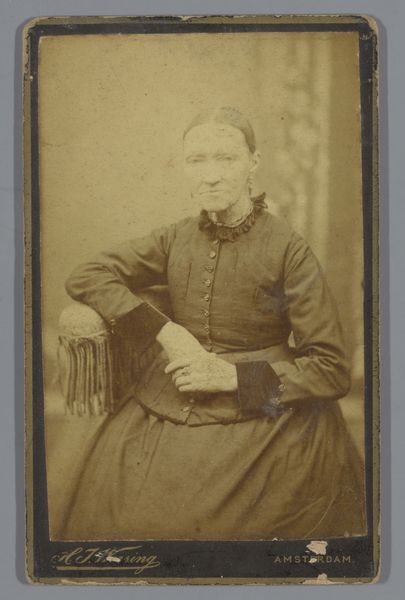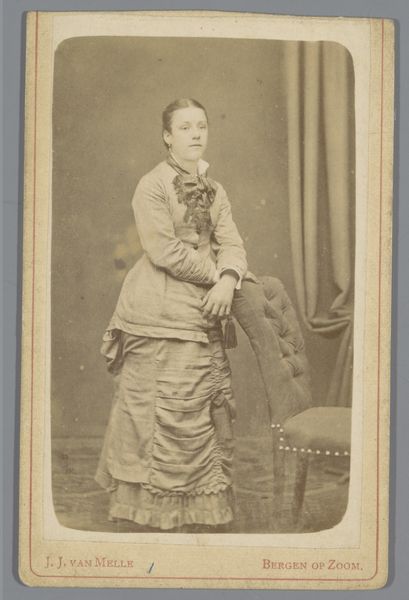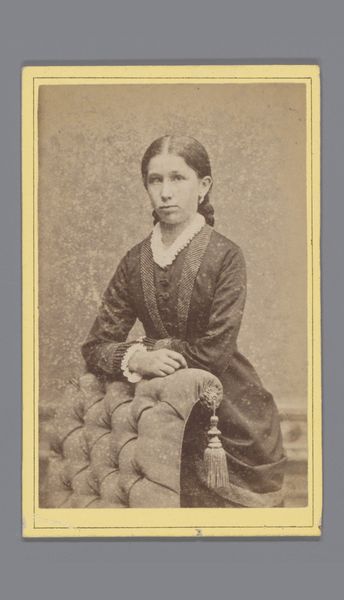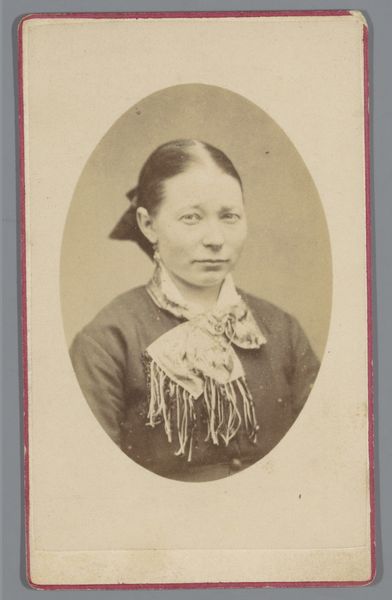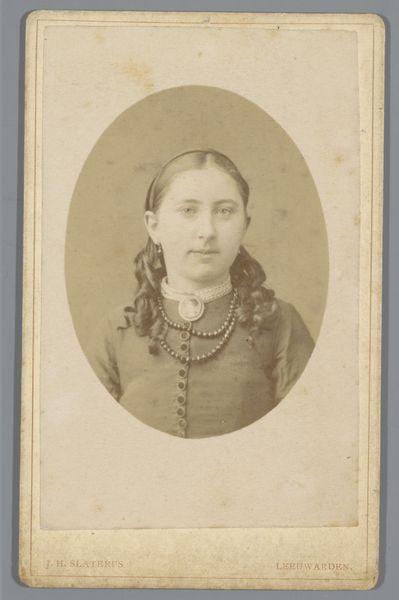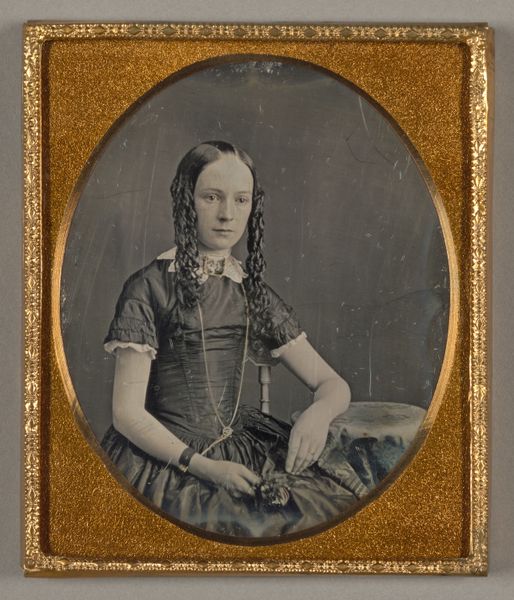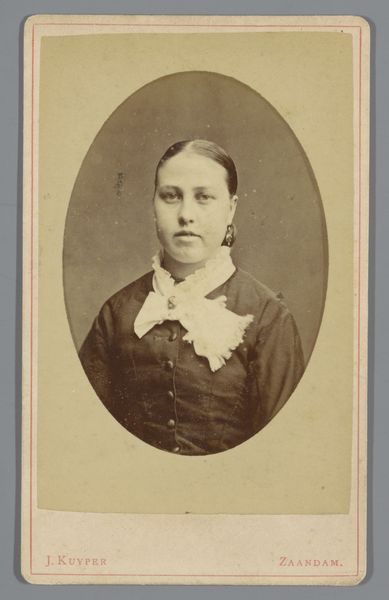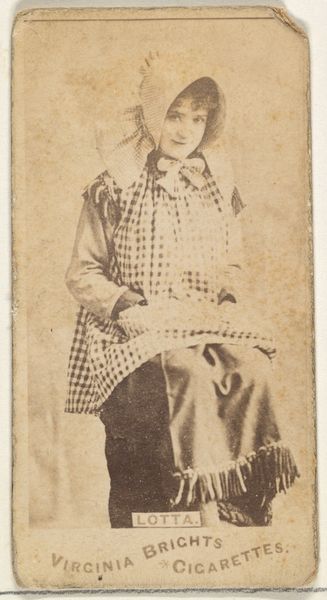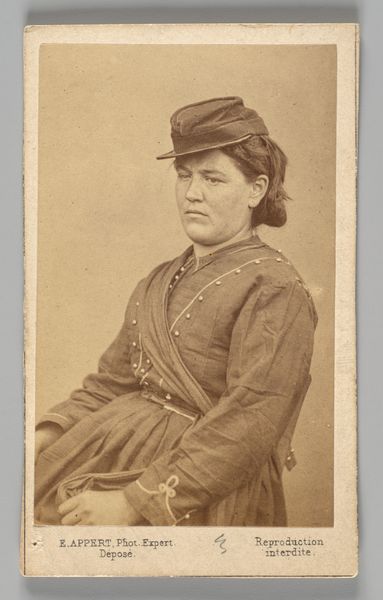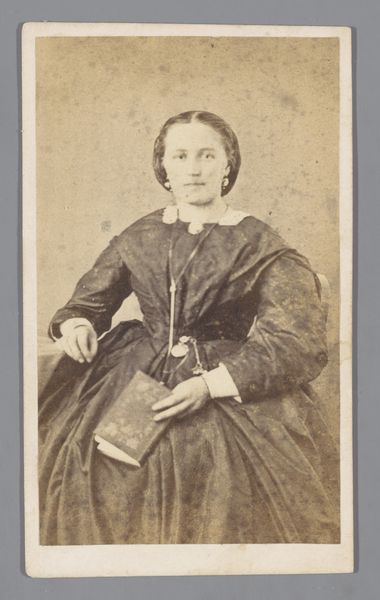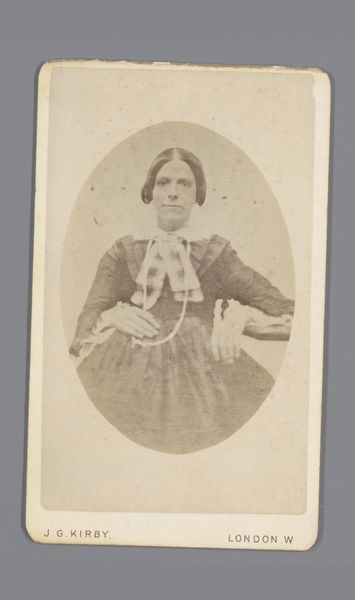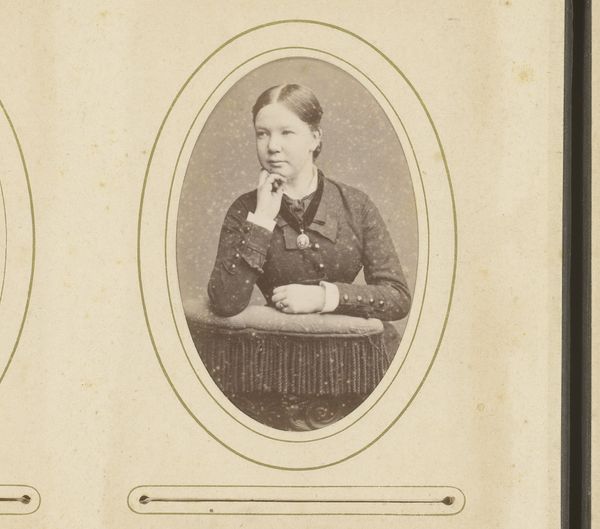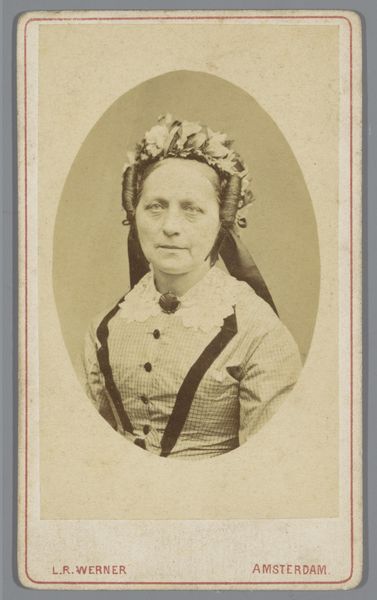![Untitled [portrait of an actress] by Jeremiah Gurney](/_next/image?url=https%3A%2F%2Fd2w8kbdekdi1gv.cloudfront.net%2FeyJidWNrZXQiOiAiYXJ0ZXJhLWltYWdlcy1idWNrZXQiLCAia2V5IjogImFydHdvcmtzLzNlZGQzODQxLWRlMGYtNDY4Yy1hMGVlLTNlY2YxN2ZlZTg2OC8zZWRkMzg0MS1kZTBmLTQ2OGMtYTBlZS0zZWNmMTdmZWU4NjhfZnVsbC5qcGciLCAiZWRpdHMiOiB7InJlc2l6ZSI6IHsid2lkdGgiOiAxOTIwLCAiaGVpZ2h0IjogMTkyMCwgImZpdCI6ICJpbnNpZGUifX19&w=3840&q=75)
daguerreotype, photography, albumen-print
#
portrait
#
daguerreotype
#
photography
#
historical photography
#
19th century
#
united-states
#
portrait art
#
albumen-print
Dimensions: 3 5/8 x 2 3/16 in. (9.21 x 5.56 cm) (image)4 x 2 7/16 in. (10.16 x 6.19 cm) (mount)
Copyright: Public Domain
This photograph of an actress was made by Jeremiah Gurney, a prominent New York photographer, at an unknown date. It raises interesting questions about the public role of art and the politics of imagery in 19th-century America. The image presents a woman, identified as an actress, posed in what appears to be a studio setting. This was a period when photography was gaining traction as both a commercial enterprise and an art form. Figures like Gurney were instrumental in shaping its institutional presence, particularly through portraiture. The image hints at the increasing visibility of women in public life. Actresses, as performers, occupied a unique position, challenging and reinforcing social norms. Was this image made for private or for public consumption? To better understand the context of this photograph, one might consult theater archives, social registers, and photographic journals of the time. What we can say is that it offers insights into the representation of women and the evolving role of photography in shaping public identity.
Comments
minneapolisinstituteofart over 1 year ago
⋮
An important part of New York City-based photographer Jeremiah Gurney’s business was making small-size portrait photographs. Beginning in the 1850s, cartes de visite (calling cards, or visiting cards) photographs were popular. They were often made with a four-lensed camera, capturing four of the same image at once. They were printed eight on a sheet and each photograph was mounted on a thick cardboard paper sized 2.5 in. by 4 in. Cartes de visite were shared among families and friends, and mostly were stored in photographic albums. However, by the early 1880s, cartes de visite were replaced by larger cartes de imperiale (cabinet card), also albumen prints, mounted on cardboard backs measuring 4.5 in. by 6.5 in. Because of their size, cartes de imperiale would have been visible from across the room. As such, they were often displayed using frames and small stands.
Join the conversation
Join millions of artists and users on Artera today and experience the ultimate creative platform.
